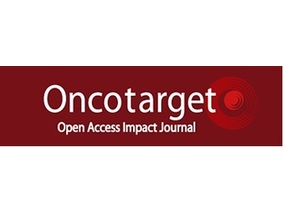 “In recent years, the endocannabinoid system has received great interest as a potential therapeutic target in numerous pathological conditions.
“In recent years, the endocannabinoid system has received great interest as a potential therapeutic target in numerous pathological conditions.
Cannabinoids have shown an anticancer potential by modulating several pathways involved in cell growth, differentiation, migration, and angiogenesis.
However, the therapeutic efficacy of cannabinoids is limited to the treatment of chemotherapy-induced symptoms or cancer pain, but their use as anticancer drugs in chemotherapeutic protocols requires further investigation.
In this paper, we reviewed the role of cannabinoids in the modulation of signaling mechanisms implicated in tumor progression.”
https://www.ncbi.nlm.nih.gov/pubmed/31979368
https://www.mdpi.com/1422-0067/21/3/747
“In addition to the symptomatic therapy of cancer patients, the antitumor effects of cannabinoids (whether in monotherapy or in combination with other cancer therapies) have promising potential in the treatment of cancer patients.” https://www.ncbi.nlm.nih.gov/pubmed/31950844
“In addition to the well-known palliative effects of cannabinoids on some cancer-associated symptoms, a large body of evidence shows that these molecules can decrease tumour growth in animal models of cancer. In addition, cannabinoids inhibit angiogenesis and decrease metastasis in various tumour types in laboratory animals. Thus, numerous studies have provided evidence that thc and other cannabinoids exhibit antitumour effects in a wide array of animal models of cancer.” https://www.ncbi.nlm.nih.gov/pmc/articles/PMC4791144/
“Antitumour actions of cannabinoids.” https://www.ncbi.nlm.nih.gov/pubmed/30019449
“The endocannabinoid system as a target for the development of new drugs for cancer therapy” https://www.ncbi.nlm.nih.gov/pubmed/12723496
“Cannabinoids as Anticancer Drugs.” https://www.ncbi.nlm.nih.gov/pubmed/28826542

 “Tetrahydrocannabinol (THC), cannabidiol (CBD) and cannabinol (CBN) affect the human endocannabinoid system.
“Tetrahydrocannabinol (THC), cannabidiol (CBD) and cannabinol (CBN) affect the human endocannabinoid system. “To evaluate interest in and patterns of use of non-prescription
“To evaluate interest in and patterns of use of non-prescription  “The endocannabinoid system (ECS) is a multifunctional homeostatic system involved in many physiological and pathological conditions. The ligands of the ECS are the endocannabinoids, whose actions are mimicked by exogenous cannabinoids, such as phytocannabinoids and synthetic cannabinoids. Responses to the ligands of the ECS are mediated by numerous receptors like the classical cannabinoid receptors (CB1 and CB2) as well as ECS-related receptors, e.g., G protein-coupled receptors 18 and 55 (GPR18 and GPR55), transient receptor potential ion channels, and nuclear peroxisome proliferator-activated receptors. The ECS regulates almost all levels of female reproduction, starting with oocyte production through to parturition. Dysregulation of the ECS is associated with the development of gynecological disorders from fertility disorders to cancer. Cannabinoids that act at the ECS as specific agonists or antagonists may potentially influence dysregulation and, therefore, represent new therapeutic options for the therapy of gynecological disorders.”
“The endocannabinoid system (ECS) is a multifunctional homeostatic system involved in many physiological and pathological conditions. The ligands of the ECS are the endocannabinoids, whose actions are mimicked by exogenous cannabinoids, such as phytocannabinoids and synthetic cannabinoids. Responses to the ligands of the ECS are mediated by numerous receptors like the classical cannabinoid receptors (CB1 and CB2) as well as ECS-related receptors, e.g., G protein-coupled receptors 18 and 55 (GPR18 and GPR55), transient receptor potential ion channels, and nuclear peroxisome proliferator-activated receptors. The ECS regulates almost all levels of female reproduction, starting with oocyte production through to parturition. Dysregulation of the ECS is associated with the development of gynecological disorders from fertility disorders to cancer. Cannabinoids that act at the ECS as specific agonists or antagonists may potentially influence dysregulation and, therefore, represent new therapeutic options for the therapy of gynecological disorders.” “Ovarian cancer, with over a 90% reoccurrence within 18 months of treatment, and approximately a 30% mortality rate after 5 years, is the leading cause of death in cases of gynaecological malignancies. Acquired resistance, and toxic side effects by clinically used agents are major challenges associated with current treatments, indicating the need for new approaches in ovarian cancer treatment.
“Ovarian cancer, with over a 90% reoccurrence within 18 months of treatment, and approximately a 30% mortality rate after 5 years, is the leading cause of death in cases of gynaecological malignancies. Acquired resistance, and toxic side effects by clinically used agents are major challenges associated with current treatments, indicating the need for new approaches in ovarian cancer treatment.


 “Currently, the involvement of the endocannabinoid system in cancer development and possible options for a cancer-regressive effect of
“Currently, the involvement of the endocannabinoid system in cancer development and possible options for a cancer-regressive effect of